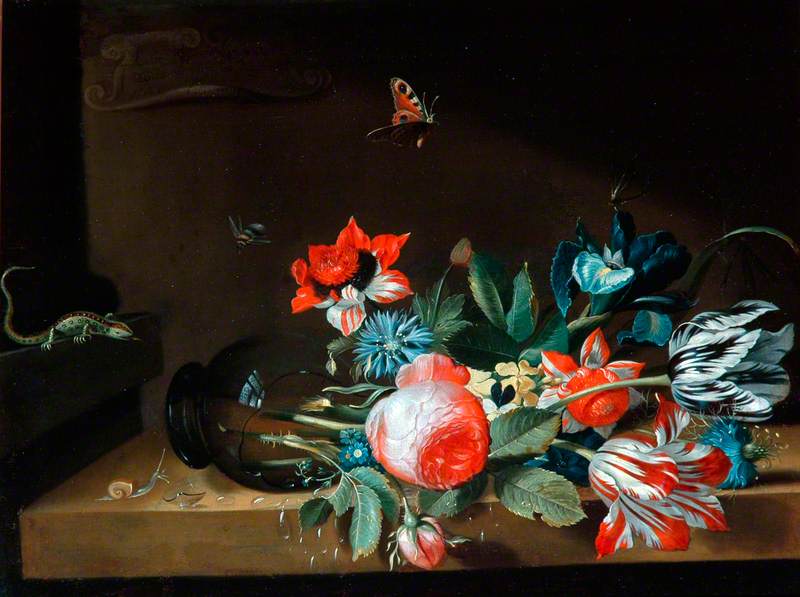Not being an artist myself, I’d always found still life paintings rather boring and wondered why artists had such a fascination with painting inanimate objects, often painting the same subject repeatedly.
Still Life: An Allegory of the Vanities of Human Life
about 1640
Harmen van Steenwyck (1612–c.1656) 
However, since working as a coordinator with Art UK, and having catalogued hundreds of still life paintings, I have become rather attached and ever more impressed by the skill and artistry involved in works that capture and portray lifeless objects to produce something which can astonish or repel.
Type ‘still life’ into Art UK and up pop thousands of paintings. The variety of subject matter is immense.
There are sumptuously detailed works from Dutch artists such as Willem Claesz. Heda and Harmen van Steenwyck, the famed decorative flower pictures of Jean-Baptiste Monnoyer to twentieth-century pieces by Robert MacBryde and Mary Fedden.
A Still Life of an Overturned Glass Vase with Flowers and Flying Insects
1651
Jacob Marrel (1614–1681) 
If you don’t consider yourself a fan of still life work, I urge you to take a look at just a few of these paintings.
You will probably get hooked and search them out next time you visit a gallery.
Hazel Buchan Cameron, Former Art UK Paintings Project Coordinator


















